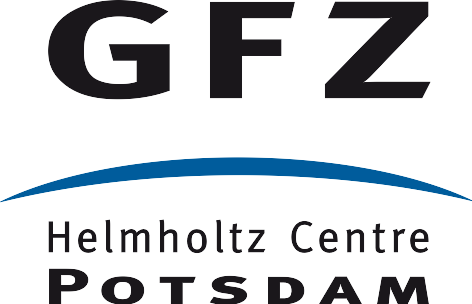Time Frame: 2022-2026
Funding: BGE
Principal Investigator:Oliver Heidbach , Moritz Ziegler
Personnel: Sophia Morawietz
Project Website:www.spannend-projekt.de
Cooperations: Birgit Müller, Tobias Hergert, Luisa Röckel, Frank Schilling (KIT), Andreas Henk, Steffen Ahlers, Karsten Reiter (TU Darmstadt)
The tectonic stress field in the Earth's crust affects a large number of site selection criteria for the management of radioactive waste. Within the project SpannEnD the Germany-wide, geomechanical-numerical 3D model will be further refined. This model has been calibrated against stress data and based on continuum-mechanical approaches it allows predictions for areas without stress data and the predict the six independent components of the 3D stress tensor. In addition, we will further develop tools that allow the transfer across to allow for consistent predictions between the Germany stress model and local models on repository scale (see Figure). In this phase our research is independent of host rocks and does not focus on any particular region. The goal is to provide basic research results, stress data and tools needed to generate in the future geomechanical-numerical models for selected siting areas with given host rock conditions.
![[Translate to English:] Differenzspannung](/fileadmin/_processed_/3/a/csm_SpannEnd20_ac55e6a530.png)
References
- Ahlers, S., L. Röckel, T. Hergert, K. Reiter, O. Heidbach, A. Henk, B. Müller, S. Morawietz, M. Scheck-Wenderoth, and D. Anikiev (2022): The crustal stress field of Germany: a refined prediction. Geothermal Energy, 10(1). http://doi.org/10.1186/s40517-022-00222-6
- Ahlers, S., A. Henk, T. Hergert, K. Reiter, B. Müller, L. Röckel, O. Heidbach, S. Morawietz, M. Scheck-Wenderoth, and D. Anikiev (2021): 3D crustal stress state of Germany according to a data-calibrated geomechanical model. Solid Earth, 12(8), 1777-1799. http://doi.org/10.5194/se-12-1777-2021
- Heidbach, O., M. Rajabi, K. Reiter, M. Ziegler, and a. t. W. Team (2016), World Stress Map Database Release 2016, GFZ German Research Centre for Geosciences, Potsdam, GFZ Data Services. http://doi.org/10.5880/WSM.2016.001
- Heidbach, O., J. Reinecker, M. Tingay, B. Müller, B. Sperner, K. Fuchs, and F. Wenzel (2007), Plate boundary forces are not enough: Second- and third-order stress patterns highlighted in the World Stress Map database, Tectonics, 26(TC6014). http://doi.org/10.1029/2007TC002133
- Hergert, T., O. Heidbach, K. Reiter, S. Giger, and P. Marschall (2015), Stress field sensitivity analysis in a sedimentary sequence of the Alpine foreland, northern Switzerland, Solid Earth, 6, 533-552. http://doi.org/10.5194/se-6-533-2015
- Reiter, K., and O. Heidbach (2014), 3-D geomechanical-numerical model of the contemporary crustal stress state in the Alberta Basin (Canada), Solid Earth, http://doi.org/10.5194/se-5-1123-2014
- Reiter, K., O. Heidbach, B. Müller, J. Reinecker, and T. Röckel (2016), Stress Map Germany 2016, GFZ German Research Centre for Geosciences, Potsdam, GFZ Data Services. http://doi.org/10.5880/WSM.Germany2016_en
- Reiter, K., O. Heidbach, J. Reinecker, B. Müller, and T. Röckl (2015), Spannungskarte Deutschland 2015, Erdöl Erdgas Kohle, 131(11), 437-442.
- Röckel, L., S. Ahlers, B. Müller, K. Reiter, O. Heidbach, A. Henk, T. Hergert, and F. Schilling (2022): The analysis of slip tendency of major tectonic faults in Germany. Solid Earth, 13(6), 1087-1105. http://doi.org/10.5194/se-13-1087-2022
- Ziegler, M., Heidbach, O., Reinecker, J., Przybycin, A. M., & Scheck-Wenderoth, M. (2016). A multi-stage 3-D stress field modelling approach exemplified in the Bavarian Molasse Basin. Solid Earth, 7, 1365-1382. http://doi.org/10.5194/se-7-1365-2016
- Ziegler, M. O., and O. Heidbach (2023): Bayesian Quantification and Reduction of Uncertainties in 3D Geomechanical‐Numerical Models. Journal of Geophysical Research: Solid Earth, 128(1). http://doi.org/10.1029/2022jb024855



